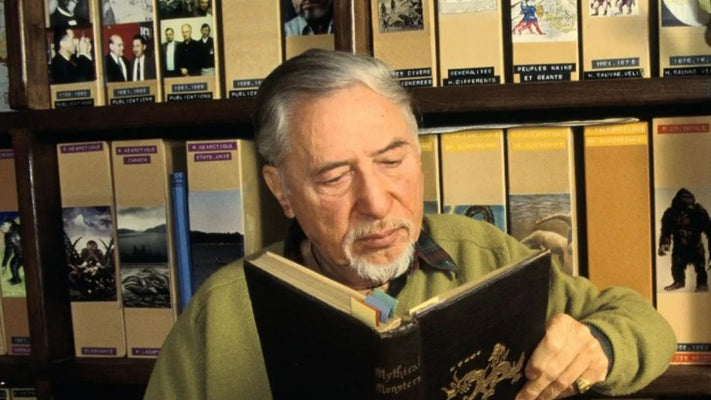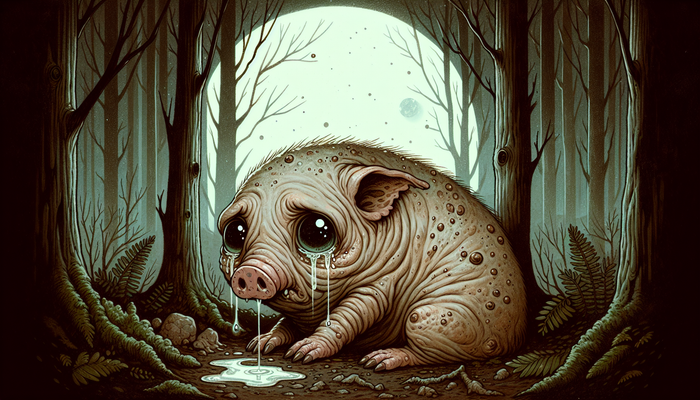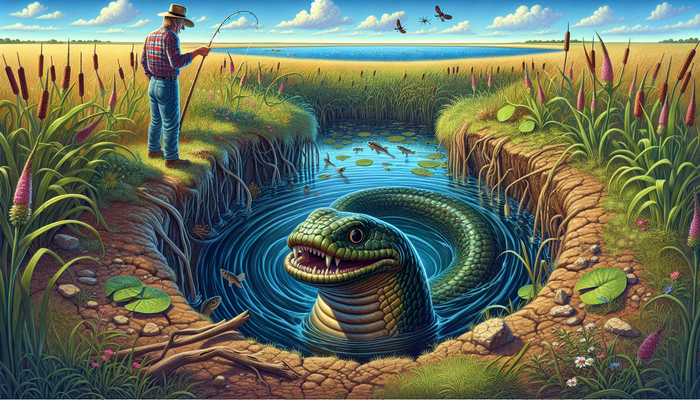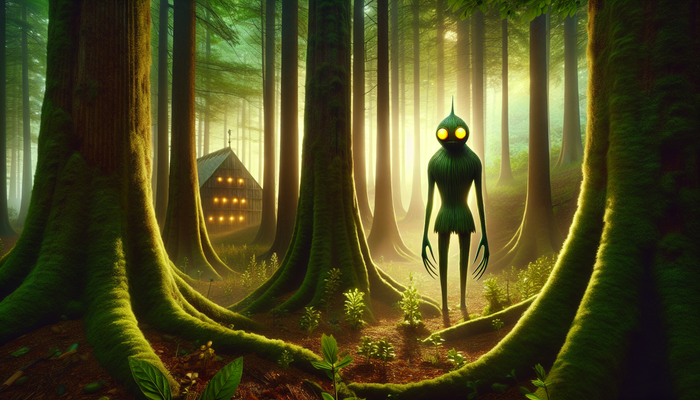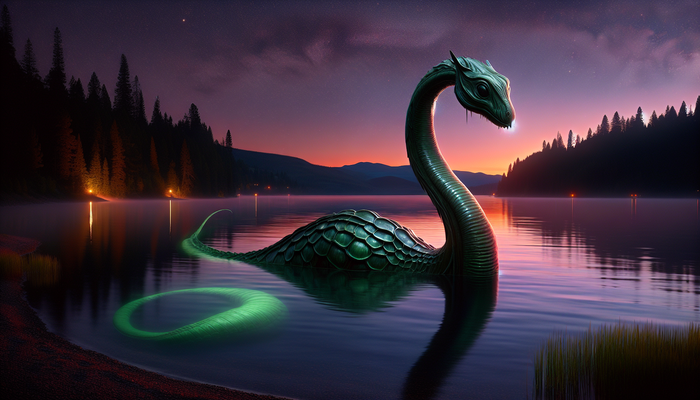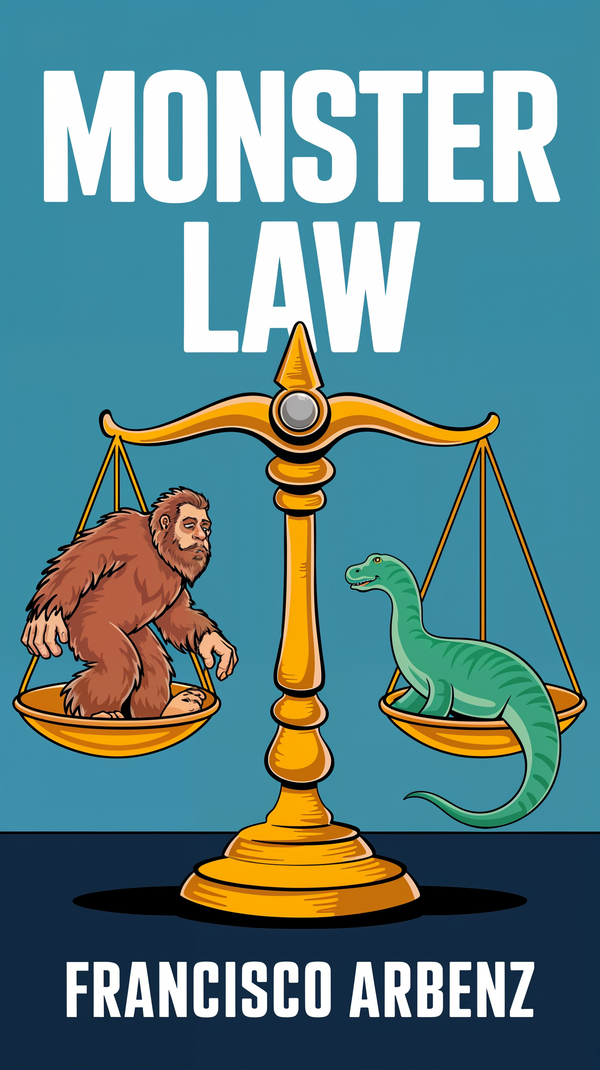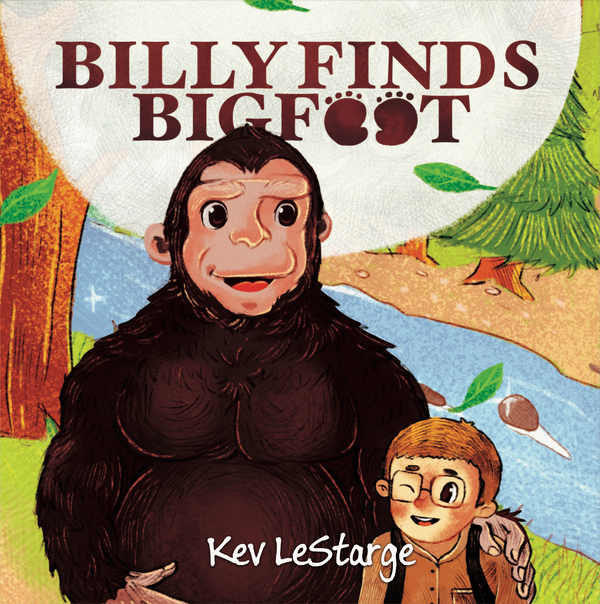WWII Gremlins: Mischievous Saboteurs or Mythical Saviors?

By Wade Beaumont, Cryptozoologist
It's 1944 and you're a young British pilot, soaring high above the battlefields of Europe in your trusty Spitfire. Suddenly, your engine sputters. Gauges spin wildly. Control stick goes slack in your hand. You scan the sky, heart pounding, fearing the worst - enemy fighters, flak, mechanical failure. But then you see it. Clinging to the wing, a tiny figure. Not much bigger than a child's doll. Pointed ears. Impish grin. Beady red eyes glinting with mischief. Your blood runs cold as you watch the creature tear at cables and wires, cackling with glee. You've just had your first encounter with...a gremlin.
Now, I know what you're thinking. Gremlins? Those little monsters from the movies, right? Furry critters that spawn from Gizmo and wreak havoc on small town America? Well, yes and no. The gremlins of 1940s aviation lore were a different breed entirely. Born in the imaginations of RAF pilots in the 1920s, these pint-sized pixies really earned their wings in WWII, becoming an integral part of Allied aircrew culture. More than mere myths, gremlins played a vital role in boosting morale, building camaraderie, and helping flyers make sense of the senseless. These impish saboteurs may have been figments of the imagination, but to the men who fought the air war, they were as real as it got. This is their story.
Origins of the Gremlin Myth
To trace the roots of the gremlin legend, we have to wind the clock back to the early days of aviation, when flying was still a new, exciting, and incredibly dangerous game. In the 1920s, pilots with Britain's Royal Air Force started whispering about strange creatures that liked to hitch rides on their aircraft. Mischievous little imps who took great pleasure in fiddling with instruments, jamming guns, and generally causing all sorts of mechanical mayhem. Whenever an engine conked out or a gauge went haywire for no good reason, you could bet a gremlin was to blame.
The first printed reference to these pesky pixies popped up in the April 1929 edition of the aviation journal Aeroplane, in a cheeky poem about the trials and tribulations of RAF life. But it wasn't until WWII that the gremlin myth really took flight. As Allied pilots pushed themselves and their planes to the limit in the skies over Europe and the Pacific, gremlin sightings went through the roof. Suddenly, everyone from fresh-faced recruits to grizzled aces was swapping stories about their own close encounters with the little blighters.
Now, it's easy to write off these gremlin tales as the product of frazzled nerves and too many lonely nights in the cockpit. But there was more to it than that. In a world where death lurked around every cloud and the line between victory and defeat was razor thin, gremlins served a vital purpose. They gave aircrews a much-needed outlet for the stress and anxiety of combat flying. A way to laugh in the face of danger. And a scapegoat for all the inexplicable, unfair, and just plain rotten luck that came with the territory. In short, gremlins were the perfect wartime coping mechanism. And as the air war heated up, their legend only grew.
Anatomy of a Gremlin
So, what exactly did these aeronautical imps look like? Well, that depends on who you ask. Gremlin descriptions varied from squadron to squadron and even from pilot to pilot. But there were a few common threads. For starters, gremlins were usually depicted as being quite small, rarely standing more than a foot tall. They had pointed ears, impish features, and deep, red eyes that glinted with mischief. Sharp teeth and claws hinted at their destructive capabilities.
Clothing-wise, gremlins had a penchant for colorful getups. A typical gremlin might sport a bright red jacket festooned with gleaming buttons, often with a jaunty cap or helmet to match. Some had furry pants, others wore boots or spats. A few even sported goggles or tiny flight suits, as if to mock their human tormentors.
But gremlins didn't just come in one flavor. According to aircrew lore, there were all sorts of specialized gremlin types, each with its own particular brand of mechanical mischief.
- "Jockey" gremlins liked to hop on the wings of low-flying planes and use their weight to throw off the aircraft's balance.
- "Optics" gremlins were known for sneaking into bombsights and messing up a bombardier's aim at critical moments.
- "Bombii" gremlins took great pleasure in riding on bombs, steering them off target as they fell.
- "Water" gremlins were the ones who crept into fuel lines and contaminated the gas with water, causing engines to sputter and die.
The thing about gremlins, though, was that they didn't discriminate. They were equal opportunity tricksters, as likely to sabotage an RAF Spitfire as a Luftwaffe Messerschmitt. In a way, this made them the perfect mascots for the mechanical mayhem of air combat. After all, a jammed gun or a ruptured hydraulic line didn't care what color roundel was painted on a plane's wings. Gremlins were a reminder that, in the high stakes game of aerial warfare, luck - both good and bad - played a bigger role than most pilots cared to admit.
Gremlins in Popular Culture
As gremlin sightings multiplied in wartime skies, it wasn't long before these impish saboteurs started infiltrating popular culture back on the ground. One of the first big breaks came in 1943, when a young RAF pilot named Roald Dahl published a book called The Gremlins. Dahl, who would go on to become a world-famous children's author with classics like Charlie and the Chocolate Factory, drew on his own experiences flying Hawker Hurricanes to spin a whimsical yarn about a pilot named Gus and his run-ins with mischievous plane-dwelling creatures.
The book caught the eye of none other than Walt Disney, who snapped up the film rights and started developing a big-screen adaptation. The project got as far as some initial character designs and storyboards before it was ultimately shelved. But Dahl's gremlins lived on. The book was a hit with kids on both sides of the Atlantic, and helped introduce a whole new generation to the mythology of these high-flying tricksters.
Around the same time, gremlins were also making their mark on the funny pages. In 1943, Warner Bros. released a Bugs Bunny cartoon called Falling Hare, in which the wisecracking rabbit does battle with a gremlin bent on sabotaging an American bomber. The cartoon was a hit with military audiences, and helped cement gremlins' place in the pantheon of wartime pop culture icons.
But the gremlin phenomenon wasn't limited to books and cartoons. They also started popping up in more serious contexts. In 1944, for example, the U.S. Army Air Forces started using gremlin characters in a series of safety posters aimed at reminding crews to take proper precautions with their planes. One typical poster showed a leering gremlin with the caption "Gremlins think it's FUN to HURT you - Use CARE always." It was a clever bit of reverse psychology, using the gremlin myth to actually promote safer flying practices.
As the war dragged on, gremlins continued to be a staple of military folklore. They were the subject of countless cartoons, poems, and stories in service newspapers and magazines. Some units even adopted gremlins as unofficial mascots, painting their likenesses on planes and incorporating them into squadron patches and insignia. And when the war finally ended, the gremlin legend lived on, surfacing in everything from Twilight Zone episodes to, yes, those 1980s movies with Gizmo and Stripe. But for the men who fought the air war, gremlins would always be more than just characters in a story. They were a vital part of the fabric of military aviation, a reminder of the thin line between luck and disaster that every pilot walked each time they took to the sky.
Gremlin Encounters and the Psychology of Warfare
Now, it's one thing to read about gremlins in a storybook or chuckle at their antics in a cartoon. But for the Allied aircrews who tangled with these creatures day in and day out, gremlins were deadly serious business. Especially for the men of the RAF's Photographic Reconnaissance Units, who flew solo missions deep into enemy airspace to snap vital intelligence photos. Unarmed and unarmored, these pilots relied on speed, guile, and sheer luck to complete their missions and make it back alive. Gremlins loved to prey on PRU pilots, or so the stories went. There were countless tales of gremlins mucking up cameras, jamming shutters, and even poking their fingers over lenses at critical moments, ruining valuable film and putting missions in jeopardy.
Bomber crews had it just as bad, if not worse. Gremlins seemed to take a perverse delight in tormenting these men, who already had to contend with long flights, bone-chilling cold, and constant flak and fighter attacks. Pilots and gunners alike swore they saw gremlins capering on wings and fuselages in the midst of missions, often at the same instant that engines quit or control cables snapped. Some airmen even claimed to have glimpsed the creatures inside the plane with them, perched on instrument panels or clinging to turret guns, their eyes glowing with malevolent glee.
But perhaps the most famous gremlin encounter of all belonged to none other than Charles Lindbergh, the celebrated aviator who made the first solo flight across the Atlantic in 1927. During that historic journey, Lindbergh reported seeing strange, spectral creatures flitting about the Spirit of St. Louis' cramped cockpit. At the time, he chalked it up to exhaustion and the strain of flying solo for so many hours. But years later, after the gremlin legend had taken hold in military circles, Lindbergh revised his assessment. Those ghostly figures, he decided, must have been gremlins - the same ones that bedeviled so many Allied pilots during the war.
For all their mischief and mayhem, though, gremlins weren't universally loathed by the flyboys they tormented. In fact, many aircrews developed a kind of perverse affection for the creatures, even as they cursed their interference. In a way, this makes perfect sense. After all, gremlins were often the only companions a pilot had during long, lonely missions over hostile territory. And in the pressure-cooker environment of combat flying, where stress and fear were constant companions, the gremlin myth provided a much-needed outlet for pent-up emotions and anxieties.
Think about it: by blaming mechanical failures and other mishaps on gremlins, aircrews could distance themselves from the terrifying randomness of aerial combat. If a plane crashed or a crewman was lost, it wasn't just a senseless tragedy - it was the work of a capricious, implacable foe. Gremlins gave a face to the faceless horrors of war, and in doing so, made them just a little bit easier to bear.
What's more, the gremlin legend fostered a sense of shared experience and camaraderie among Allied airmen. Swapping gremlin stories was a way for crews to bond, to laugh in the face of death, and to feel like they were all in it together. In a war that was all too often impersonal and anonymous, gremlins were a reminder that, even at 20,000 feet, you were never truly alone. There was always someone - or something - along for the ride.
Gremlins as Wartime Mascots and Symbols
As the gremlin myth spread throughout the Allied air forces, these impish saboteurs started taking on a symbolic role that went beyond their origins as scapegoats and coping mechanisms. In many units, gremlins became unofficial mascots, emblems of the peculiar blend of danger, superstition, and dark humor that defined life in the cockpit.
Take the Women Airforce Service Pilots, or WASPs, for instance. This groundbreaking group of female aviators, who ferried planes and served as test pilots during the war, adopted a gremlin named "Fifinella" as their official mascot. Fifinella, who was depicted as a female gremlin wearing a WASP uniform and wielding a wrench, appeared on everything from patches to letterhead to the noses of planes. For the WASPs, Fifinella was a symbol of their unique status within the military - a reminder that they, too, had to contend with the same gremlins, both literal and figurative, that their male counterparts did.
Gremlins also started showing up in nose art, that peculiar form of folk art that graced the fuselages of many a WWII bomber and fighter. Typically, nose art featured pin-up girls, cartoon characters, or aggressive slogans meant to strike fear into the enemy. But gremlins made frequent appearances as well, often shown tinkering with engines or clinging to wings with mischievous grins. For the crews that flew these planes, the gremlin art was a way of thumbing their noses at the very real dangers they faced every time they took to the sky. It was as if they were saying, "Yeah, we know the risks. But we've got our gremlins with us, so bring it on."
Some planes even took the gremlin connection a step further, adopting the creatures as part of their official names and identities. One famous example was the "Red Gremlin," a B-17 Flying Fortress that flew dozens of missions over Europe with the 384th Bomb Group. The plane's nose art featured a leering, red-skinned gremlin clutching a bomb, a fitting mascot for a crew that had to contend with flak, fighters, and mechanical mishaps on a daily basis.
But gremlins weren't just mascots for individual planes and units. In many ways, they became mascots for the entire Allied war effort, at least when it came to the air war. They were the perfect embodiment of the "can-do" spirit that defined the Allied flyers, the idea that no matter how tough things got, you could always count on a little gremlin luck to see you through. And as the tide of the war began to turn in the Allies' favor, gremlins took on an almost talismanic quality. If you had your gremlins with you, the thinking went, then victory was just a matter of time.
From Bigfoot to UFOs: Hangar 1 Publishing Has You Covered!
Explore Untold Stories: Venture into the world of UFOs, cryptids, Bigfoot, and beyond. Every story is a journey into the extraordinary.
Immersive Book Technology: Experience real videos, sights, and sounds within our books. Its not just reading; its an adventure.


